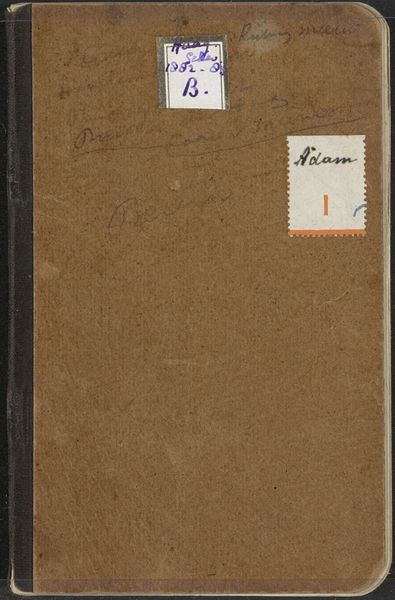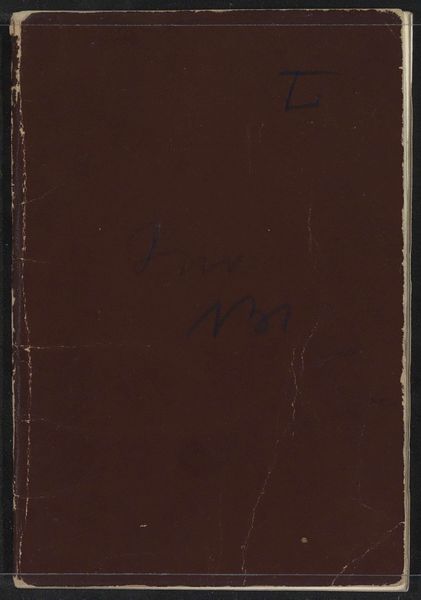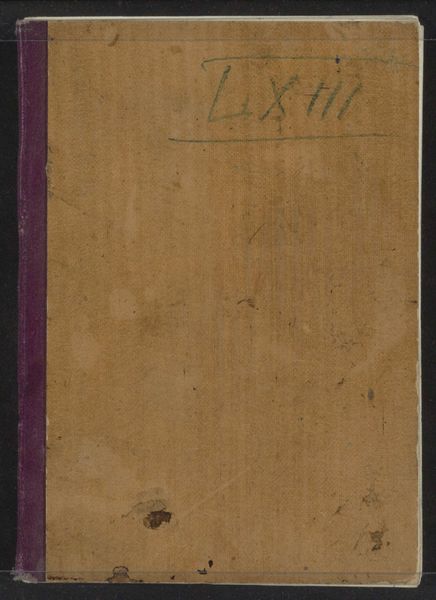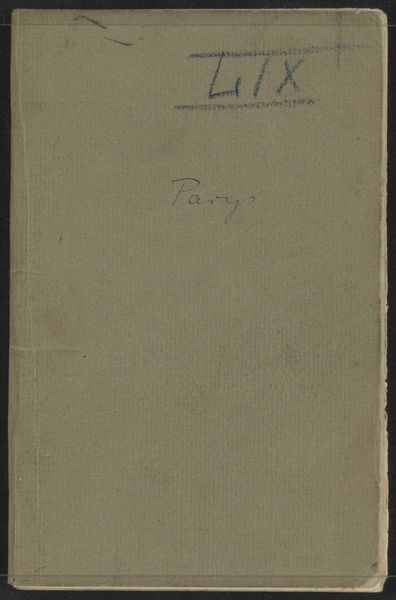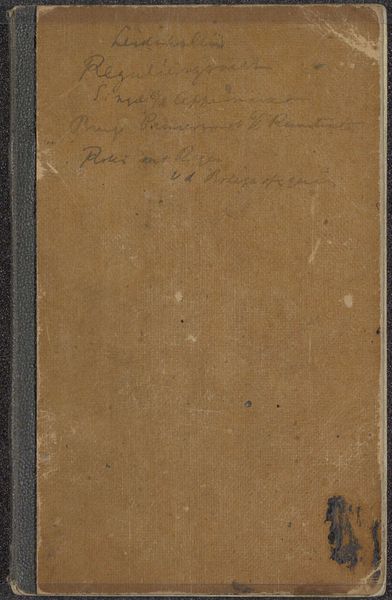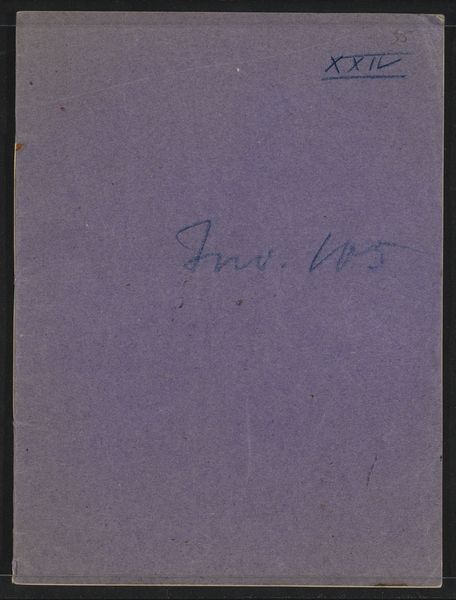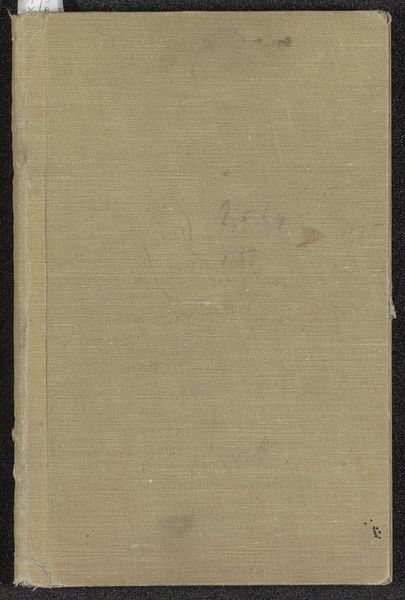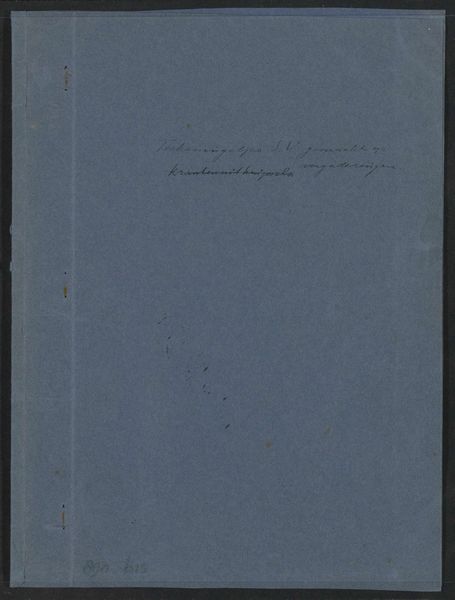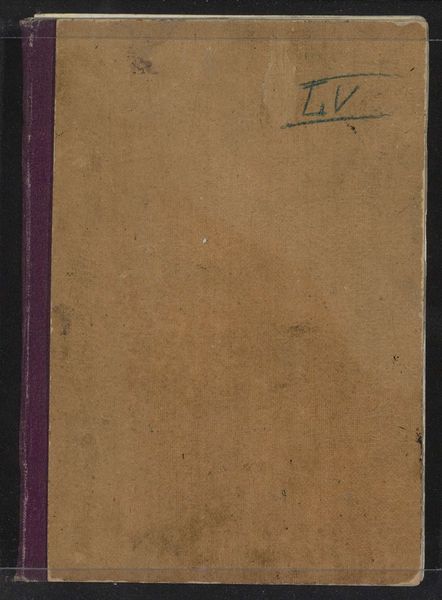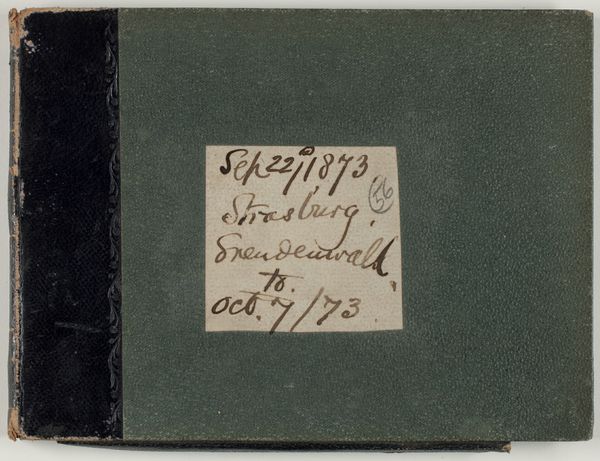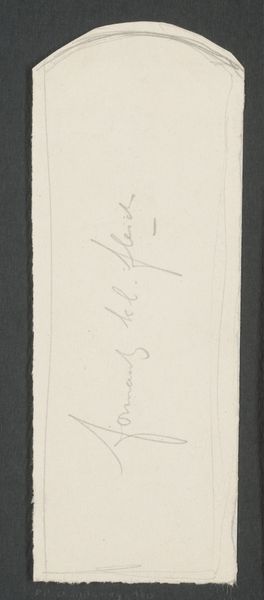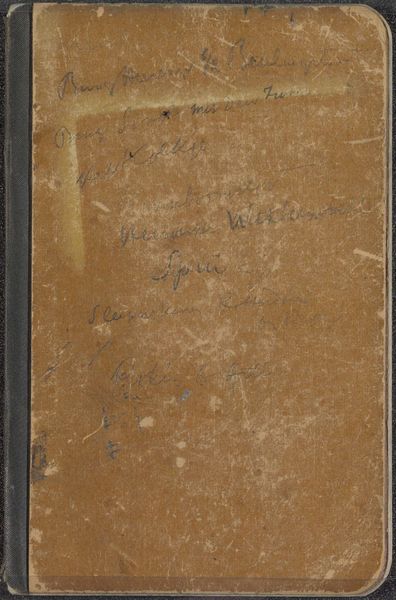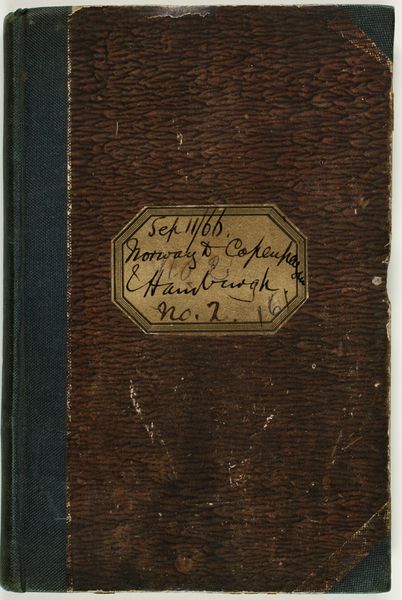
Album met 17 bladen met ingeplakte tekeningen en prenten 1876 - 1924
0:00
0:00
drawing, paper, ink
#
photo of handprinted image
#
drawing
#
toned paper
#
art-nouveau
#
blue ink drawing
#
childish illustration
#
reduced colour palette
#
old engraving style
#
paper
#
personal sketchbook
#
ink
#
ink colored
#
sketchbook drawing
#
sketchbook art
#
modernism
#
calligraphy
Dimensions: height 207 mm, width 168 mm, thickness 3 mm, width 335 mm
Copyright: Rijks Museum: Open Domain
Editor: So, this is an album of drawings and prints by Gerrit Willem Dijsselhof, created between 1876 and 1924. It’s striking how personal it feels – like a peek into the artist's own creative world. How would you approach interpreting this album, especially considering its medium, which appears to be ink and paper? Curator: For me, the allure resides in the book as an object, in the artist's hand. I’m drawn to consider the *process* of its making – the sourcing and qualities of the paper, the inks used. This object reveals an intersection of artistic practice and material culture, reflecting art nouveau and modernism. It encourages us to view “high art” such as drawings or prints, in the same manner as mundane objects like paper or ink – How was paper produced during that time? Editor: That's fascinating! It shifts the focus from just the images themselves to the labor and industries behind them. Do you think the album format influences our understanding of the work? Curator: Absolutely. The album speaks to collecting, cataloging, almost of obsessive tendencies to classify and control information during rapid social change at the turn of the century. Further more, as we delve deeper into the individual leaves in this album, it beckons us to re-consider their placement within a bound format, an aesthetic choice revealing deliberate organization and order. Does the work perhaps then comment on social organization more broadly? Editor: I hadn't considered it that way. Thinking about materials and process makes it feel less like a collection of precious images and more like a tangible record of the artist’s engagement with his world and perhaps his attempt to re-organize it through collecting. Curator: Exactly. We understand so much about art-making once we consider what it takes to manufacture an artistic image from material ingredients! This challenges traditional views on taste and artistic merit to consider artistic labor at large. Editor: I’ve never thought about an album like this. Thank you!
Comments
No comments
Be the first to comment and join the conversation on the ultimate creative platform.
